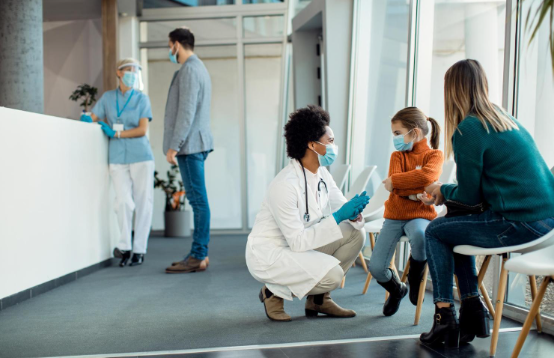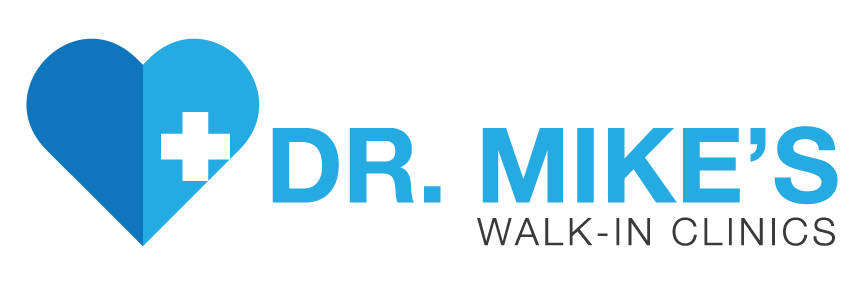Our Blog
Efficient and Affordable: The Convenience of Walk-In Medical Services

Convenience and cost are the two most important factors to take into account when looking for healthcare in the modern age. Walk-in medical clinics have evolved as a realistic answer, providing efficient and cost-effective care for a variety of medical conditions.
Read on to understand the advantages of walk-in medical services, from their convenience to their extensive choice of treatments.
Understanding Walk-in Clinics
A walk-in clinic is a healthcare facility that allows patients to receive medical care without making an appointment. These clinics provide easy access to basic medical care for common illnesses and accidents. They are also known as retail clinics since they are frequently found in retail areas or near pharmacies. Walk-in clinics are well known for their ease and affordability, offering a rapid solution for people seeking medical assistance for minor health issues.
The Rise of Walk-In Medical Clinics
The growing demand for fast medical care without the inconvenience of booking appointments has fueled the growth of walk-in medical clinics. These clinics, also known as urgent care centers or quick care facilities, provide prompt attention to people with non-life-threatening medical issues without the extended wait times typical in emergency rooms.
How Does a Walk-In Clinic Function?
When patients enter a walk-in clinic, they typically go about the following steps:
- Check-In: Patients start by checking in at the reception desk or kiosk, where they provide their personal and medical details.
- Triage: Next, a medical professional assesses the patient to determine the nature and severity of their condition. This involves taking vital signs like blood pressure and temperature and discussing symptoms with the patient.
- Examination: Following triage, a healthcare provider—a doctor, nurse practitioner, or physician assistant—examines the patient. They gather medical history, conduct a physical examination, and may order diagnostic tests such as blood work or X-rays.
- Diagnosis and Treatment: Based on the examination and any diagnostic tests, the healthcare provider offers a diagnosis and suggests a treatment plan. This could involve prescribing medications, offering medical advice, or referring the patient to a specialist or the emergency department if necessary.
- Follow-Up: The provider may recommend the patient follow up with their primary care physician or return to the walk-in clinic for further treatment or monitoring.
It's important to note that walk-in clinics are not equipped to handle life-threatening medical emergencies. In such cases, it's crucial for individuals to seek immediate assistance at the nearest hospital emergency department or call 911.
The Benefits of Walk-In Medical Services
Walk-in medical services provide convenience and accessibility by meeting patients' needs quickly and efficiently, without significant wait times or appointment hassles. Let's take a look at why more people are choosing walk-in medical services:
Convenience at Your Fingertips
One of the most significant advantages of walk-in medical clinics is their convenience. Walk-in clinics, unlike traditional healthcare settings, provide extended hours, including evenings and weekends, to accommodate busy schedules. Patients can receive quick care without having to wait for an appointment with their primary care physician or sitting in packed emergency department waiting rooms.
Comprehensive Range of Services
Walk-in medical clinics offer comprehensive services to address various medical needs. From treating common illnesses like colds and flu to providing diagnostic services such as X-rays and lab tests, these clinics are equipped to handle various health issues. Additionally, many walk-in clinics offer vaccinations, physicals, and minor procedures, making them a convenient one-stop solution for healthcare needs.
Affordable Healthcare Options
When it comes to healthcare, many people prioritize cost. Walk-in medical clinics often provide transparent pricing, letting patients know the cost of services upfront. This transparency is especially advantageous to those without health insurance or with high deductible plans since it allows them to better manage their healthcare spending. Furthermore, walk-in clinics typically have fewer overhead expenses than traditional hospitals, allowing them to deliver high-quality care at reasonable prices.
Expedited Care for Faster Recovery
Healthcare services provided by walk-in clinics are known for their promptness and efficiency. Patients should expect shorter wait times than in typical doctor's offices or emergency rooms, allowing them to receive treatment on time and recover faster. This faster care saves time and reduces disruption in patients' everyday lives, allowing them to resume normal activities sooner.
Personalized and Compassionate Care
Walk-in clinics are efficient but don't sacrifice individualized and caring attention. With fewer patients than emergency departments, medical staff can devote more time to each patient, ensuring they receive the tailored treatment they need. This individualized approach promotes better communication between patients and healthcare providers, allowing them to make more informed health decisions.
Convenient Access
Patients have easy access to walk-in clinics since they are strategically positioned in neighborhoods. This proximity minimizes the need for long trips to primary care providers, which benefits people with mobility issues or who rely on transportation options.
Seasonal Testing and Treatment Service
Walk-in clinics are ideal for treating common seasonal illnesses such as the flu and throat, ear, and sinus infections. They offer speedy testing and treatment, which is critical in limiting the spread of such diseases across the population. Furthermore, these clinics respond quickly to physical or athletic emergencies.
Ensuring Smooth Administrative and Technological Processes
Walk-in clinics have been criticized for administrative disorder. However, recent technology breakthroughs have resulted in significant improvements to their operations. Modern clinics increasingly use computerized systems to collect patient data, which eliminates the need for paperwork and shortens wait times. Furthermore, using computerized prescription ordering systems allows clinics to distribute prescriptions to patients quickly and precisely, improving overall effectiveness.
Final Words
Walk-in medical clinics provide a convenient and cost-effective healthcare service for anyone who wants immediate medical assistance. These clinics are an excellent alternative to typical healthcare facilities, offering extended hours, complete services, transparent pricing, and customized treatment.
Whether you have a mild illness or want diagnostic services,
Dr. Mike's Walk-in Clinic can meet your healthcare needs quickly and effectively.
Contact us now to prioritize your health and enjoy the convenience of walk-in medical services.


PHONE
FAX
877-738-3841
VISIT
12143 Navajo Rd.
Apple Valley, CA 92308
HOURS
Monday – Friday
8:30 AM – 6 PM
Saturday
10 AM – 3 PM
All Rights Reserved | DR. MIKE'S WALK-IN CLINIC · 12143 NAVAJO RD. APPLE VALLEY, CA 92308 | Privacy Policy

